Lesson 9 | The main point
The key concepts
The main point vs. the most important point
The main point of a passage is often not the most important point.
Toward the beginning of this course, we noted how the main point in a relationship is not necessarily the most important of the two points. We showed this with an example from 1 John 4:7a. If we expand that example out to a full paragraph, we can see that the same is true at the passage level.

There are at least seven things in this passage which are more important than the main point of this text, which is: "Beloved, let us love one another.” (See 7a and 11b.)
- the fact that love is from God (7b)
- being born of God (7d)
- knowing God (7e, 8a)
- the fact that God is love (8b)
- God showing us love by sending his Son that we may live (9a-10d, 11a)
- Jesus becoming the propitiation for our sins (10e)
- the fact we can see God in our love for one another (12a-d)
These things are all more central, foundational or ultimate than the call for us to love, but they are not the main point of the text. For the logical main point of a text is the impulse for why it was written. It is the primary thing the author means to convey in the given passage.
Often, as is the case here, the author will support his main point with greater things. Those greater things should weigh heavy upon our hearts and our teaching, but we mustn't forget that they are supporting something. If we meditate at length on the fact that “God is love” but do not consider how this ought to drive us to love the beloved children of God, then we have missed the point of the text!
The main point vs. my favorite point
There is a difference between the main point of a passage and my favorite point.
This is another concept we must understand in order to rightly discern the meaning of a text. For our natural inclination is to latch on to the verse which first grabs our heart and then to try and fit the rest of the passage around that verse. But doing so may very well turn the structure of the text on its head, distort the meaning, and leave other verses by the wayside. To properly understand the passage, we must understand what the author's main point is and how every proposition in the text is working together to make that point. Doing so will both increase the clarity and glory of our favorite verse, and might just add other favorites to the list.
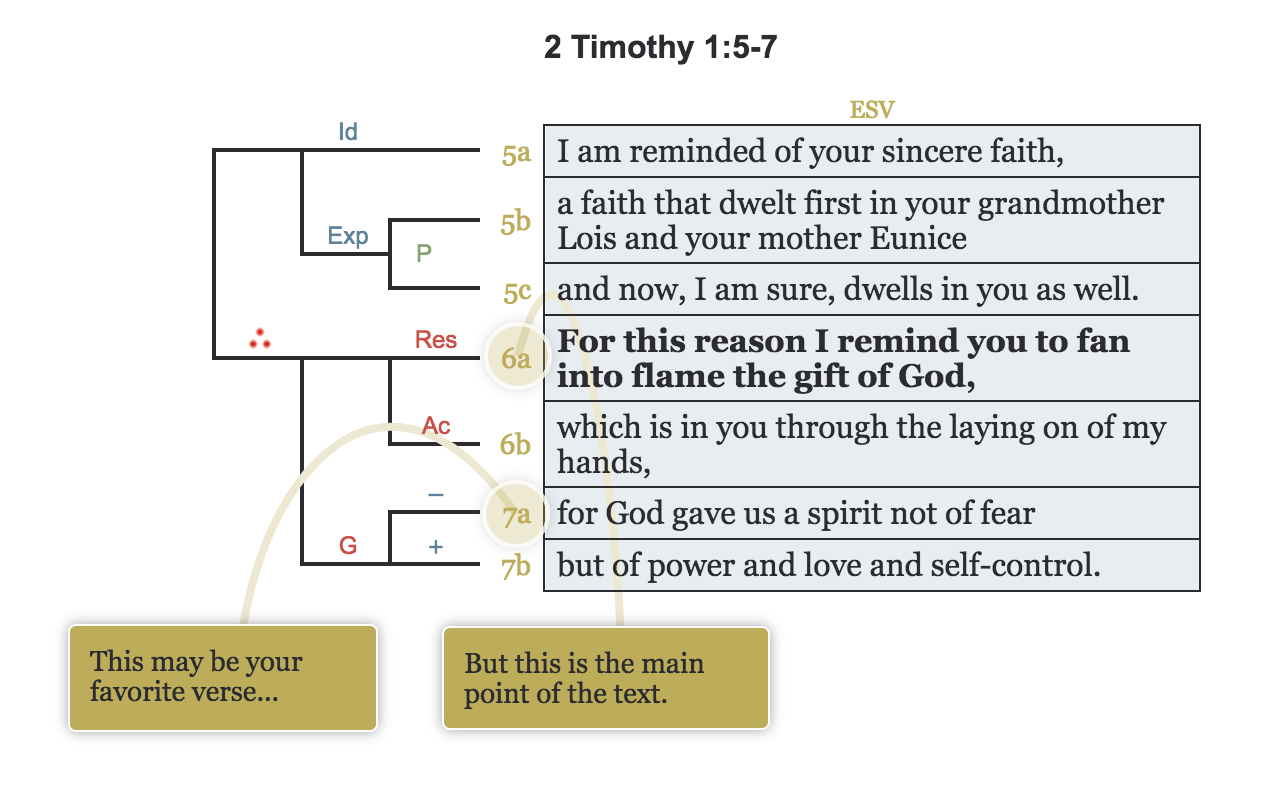
With those concepts established, we turn now to begin learning how to discern the main point of a passage.
The process of combining main points
When we relate two individual propositions together with one of the Subordinate logical relationships, we are indicating that one of the two is supporting the other. To put it another way, the relationship contains a supporting proposition and a primary (main point) proposition. We then leave that supporting point aside and connect just the main point to another piece in the passage. And so it goes.
Consider this step-by-step example.
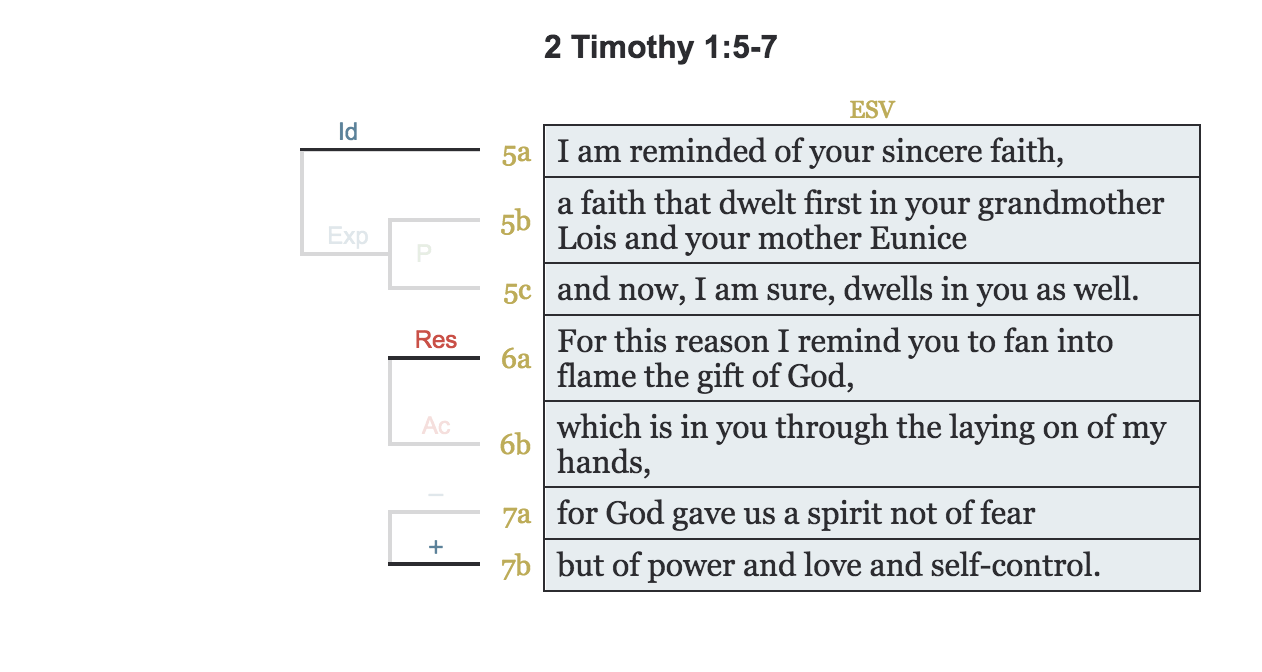
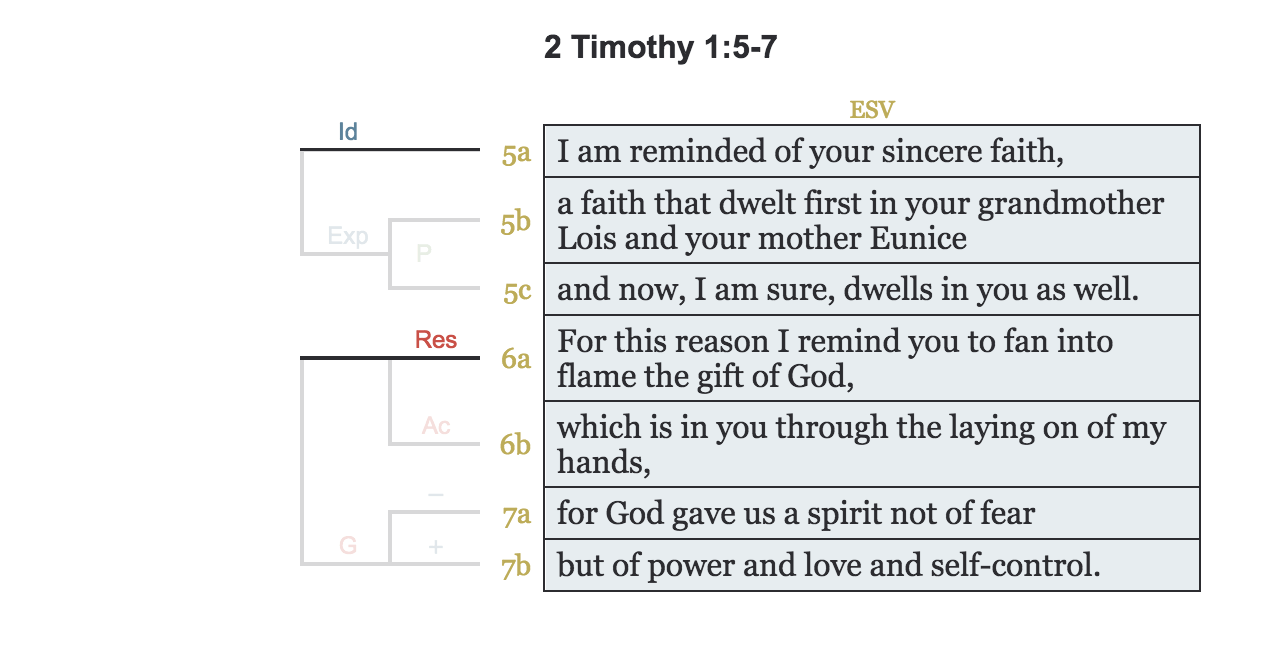
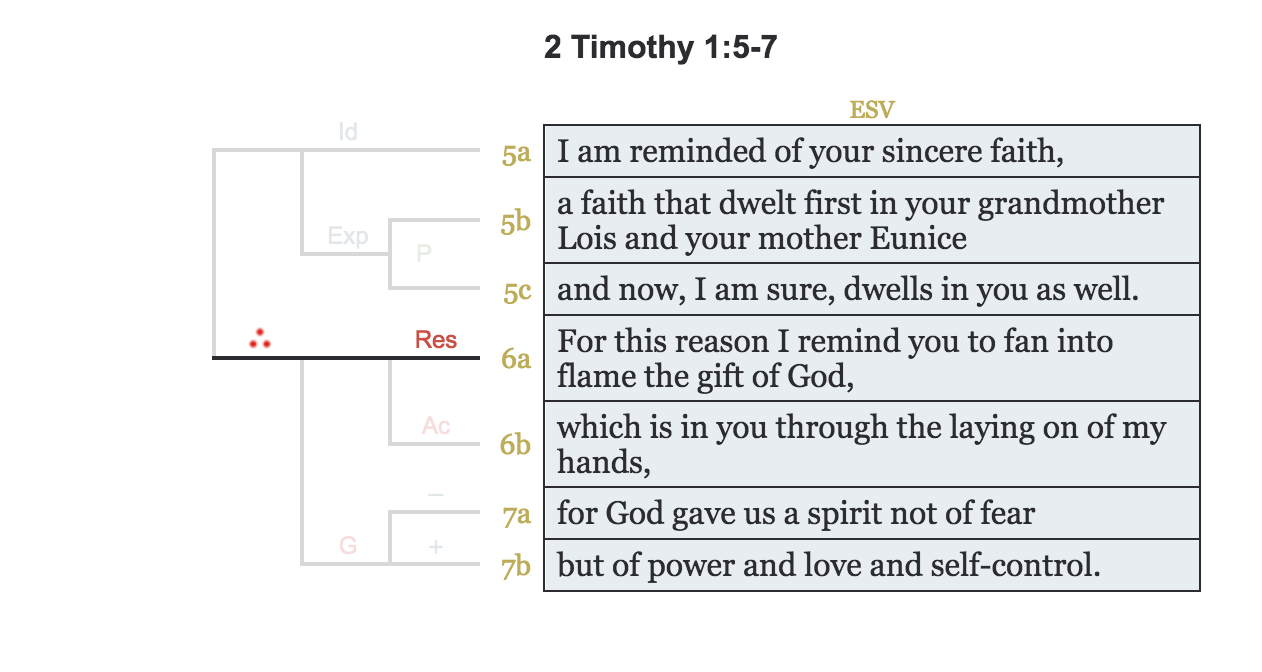
Changing the main point proposition
When connecting propositions, the main point of each relationship is identified automatically with a grey circle next to the label, as well as a star.

And when the main point is the unlabelled proposition in the relationship, the grey circle will appear on its own.

Sometimes, however, you may want to edit which proposition is the main point. For example, in 1 Corinthians 9:8-10, the Explanation seems to be emphasized more than the Idea, since the Explanation contains the purpose for which the quotation of verse 9 was written.
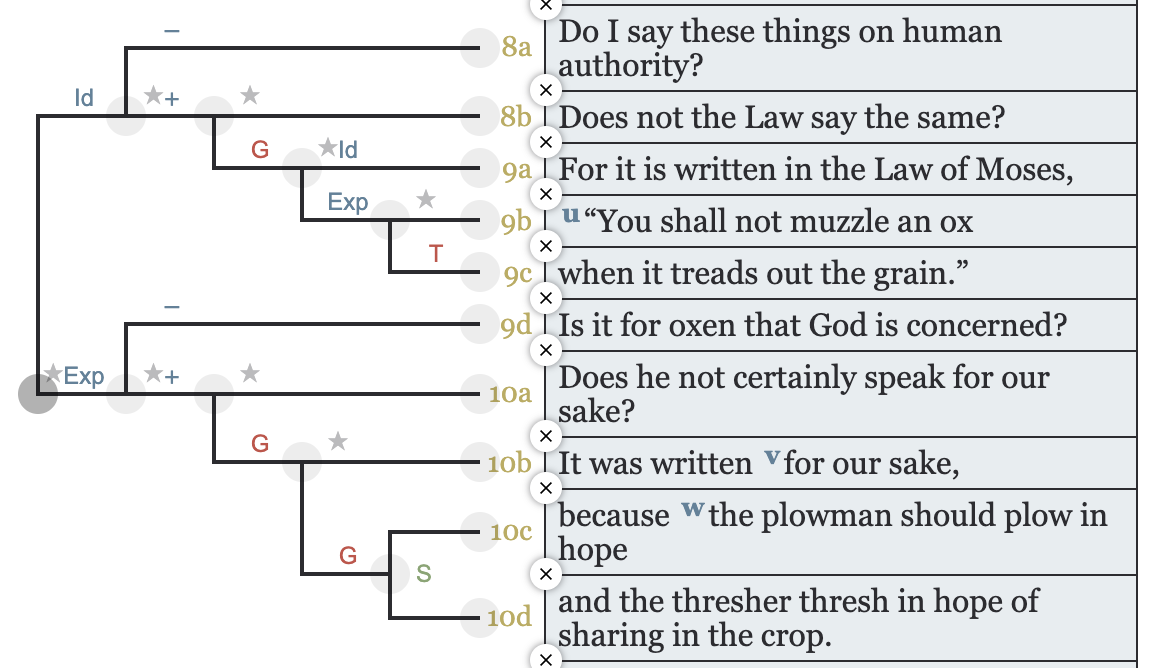
To edit which proposition is the main point in a relationship, do the following. In Editing mode, when selecting the relationship, click on the label that is the main point, so that a grey circle appears around it.
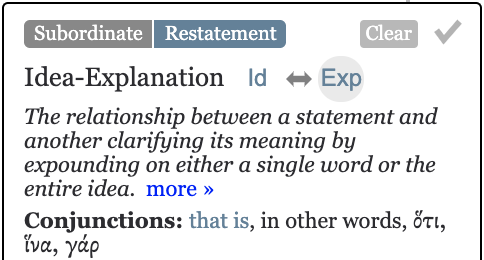
Or if you’ve already selected the relationship, drag the grey dot so that it appears next to the main point of the relationship.